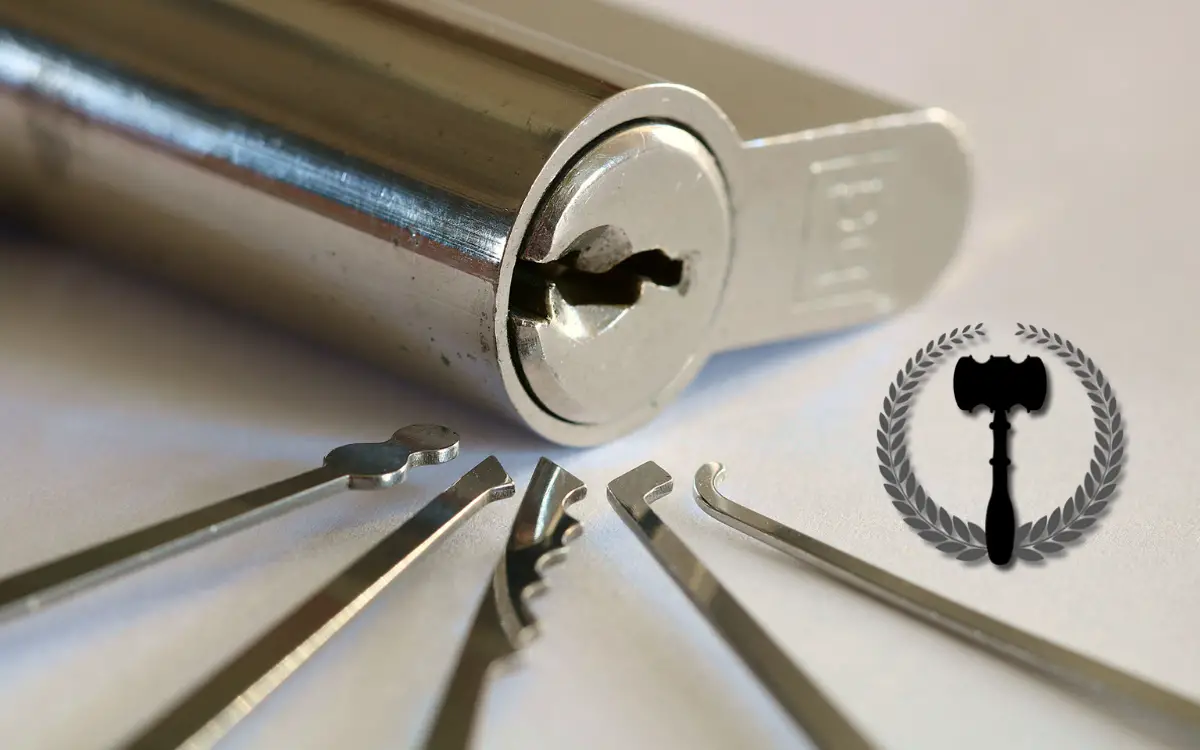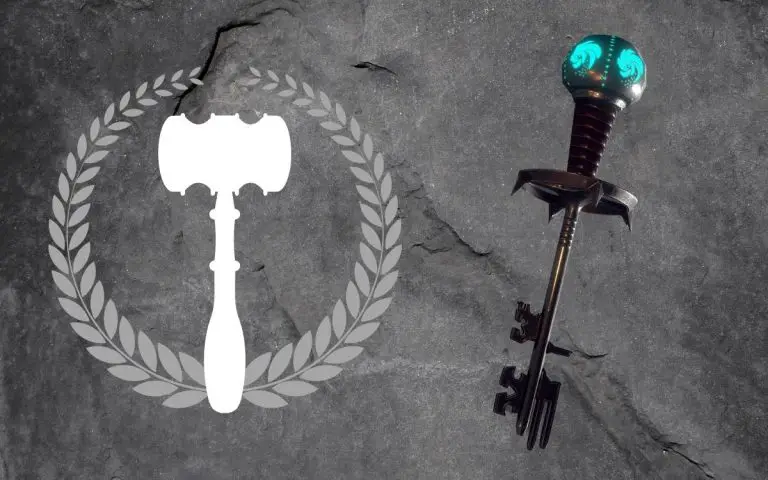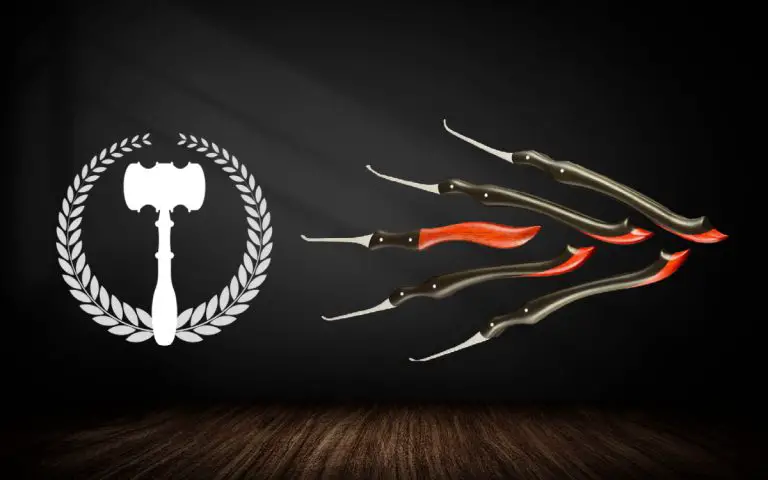Lock Picking Tools: The Ultimate Guide
There are many lock picking tools that you may want to get in your journey in Locksport. The most obvious ones you will start with will be some lock picks; this will most likely be in the form of a lock pick kit.
Once you get started, there are some other items you may want to get your hands on, like practice locks, a vise, a disassembly kit, a pining tray, and more. This is not to mention other types of picks like disc detainer picks, dimple picks, tubular picks, and more.
But let’s start by looking at some standard lock pick sets and the types of lock picks you will find in them.
Lock Picks
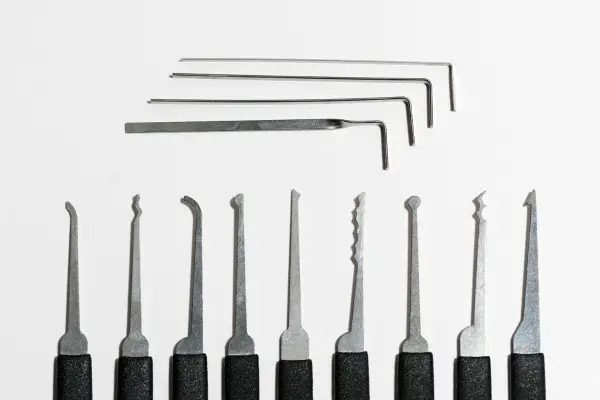
There are many types of lockpicks for all the varieties of locks you will find worldwide. The most common locks, pin tumblers, wafer locks, disc detainer locks, dimple locks, tubular locks, and more, all have lock picks specifically designed to pick them.
Being the most common type of lock found in the world and the most common type to be picked, there are more tools for pin tumbler locks than for any other. They are also where most people will start lock picking as they are the easiest to train on and have a wide range of difficulty levels.
*Paid Links
Lock Pick Sets
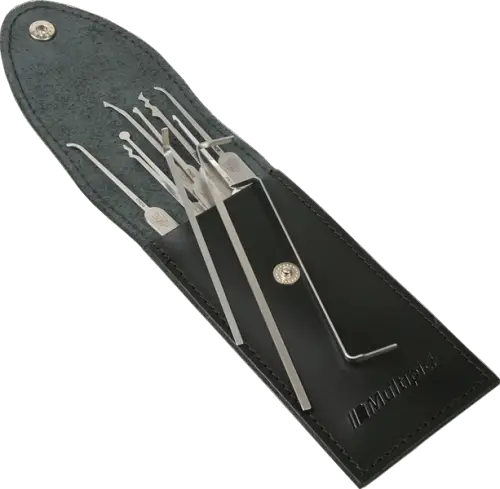
The first lock picking tool that almost every picker will get their hands on will be a lock pick set. After that, many options exist with all kinds of different tool combinations.
They will all contain a combination of at least standard hooks, turning tools, and usually wave rakes, city rakes, half diamonds, snowmen, and possibly more.
- Lock Pick Sets
There are many different lockpicks sets out there. They include many different mixes of tools so anyone can find one they are looking for. See our dedicated article on lockpick sets for more information about them.
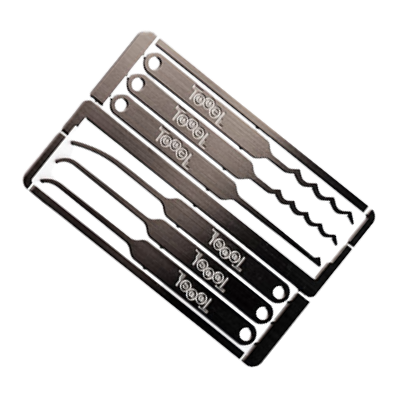
- Credit Card style lock pick sets
These lockpicks are great for an emergency, a gift, or to keep as a backup set, but they aren’t something you would want to use all the time. They have tiny sharp handles that will cut into your hands if you use them all the time.
*Paid Links
Standard Hooks

Standard hooks are the most common and most used type of pick for traditional key pin tumbler locks. These lock picks are simple in design but come in several sizes and thicknesses.
The hook depth is one of a hook pick’s most critical elements; this determines how big the hook part is at the end of the pick. This allows you to reach up inside the lock in different amounts for different types of locks. However, you will most likely find yourself reaching for a standard hook most of the time.
The next type of pick, rakes, don’t need as much skill as using a hook.
Lock Pick Rakes
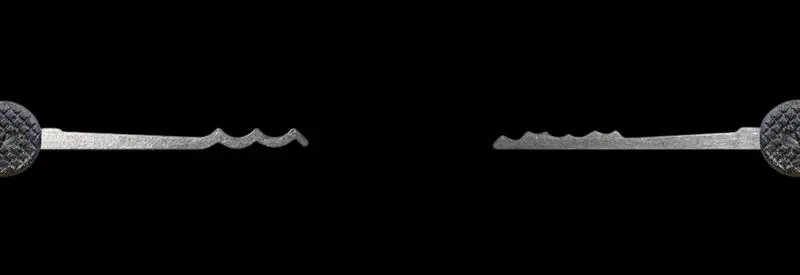
There are many types of rakes, wave rakes, city rakes, snowmen, half snowmen, half diamond, and more. They are all used similarly; you simply insert the rake into the lock, apply tension to the core and quickly move the rake in and out of the lock to open it.
The other way they can be used, and the usual way you would use a half diamond is to zip a lock. To do this, you insert the pick all the way to the back of the lock, tension the core, push the pick up into the pins and pull it out with a quick jerking motion. This movement, when done correctly, will make all the pins fly up and allow you to open the lock.
Note: Raking and zipping locks generally only work for lower security locks with larger tolerances and without specific countermeasures to avoid it. Like springs and pins are made from different materials, so they don’t all move the same.
Turning Tools (Tension Tools)
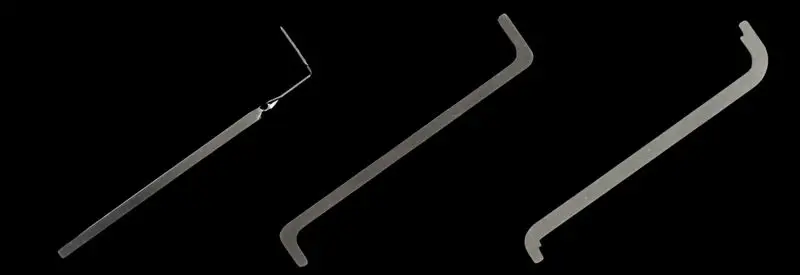
The humble turning tool is the most common type of lock picking tool. This is because no matter what kind of lock you are opening or the type of tool you are using to open it, you will need to put turning tension on the core while you are picking it, and for this, you will need a turning tool.
What is a turning tool? Turning tools are simply pieces of metal with specific thicknesses bent in different ways to allow them to be placed in the lock’s keyway and turned to put tension on the core of the lock.
Having various turning tools is convenient because locks vary in many different ways. Several turning tools will allow you to find one that fits the lock well while being ergonomic for your hand.
Pro Tip: you can make some turning tools very easily with the metal inserts from windscreen wiper blades as these are made of very firm stainless steel.
*Paid Links
Lishi Lock Picks
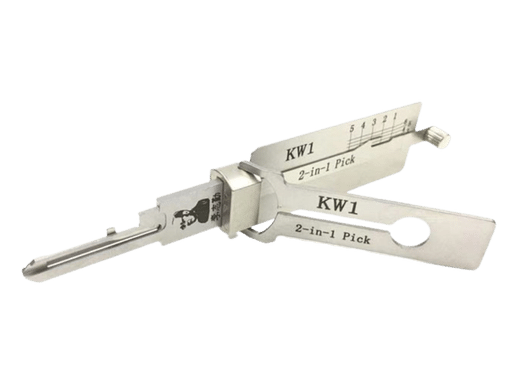
Lishi Lock picks are a specialized type of lock pick invented in Japan. They allow a lock picker not only to pick a lock open but decode it simultaneously, enabling keys to be cut for any lock very easily.
Due to many different shaped keyways in locks, various Lishi tools exist for different shapes.
Lishi tools were also created primarily for automotive locks in the first place, so there are many more Lishi tools for vehicles than for traditional door locks and padlocks.
You can learn more in our article on Lishi Tools
*Paid Links
Jiggler Keys (Wafer Jigglers)
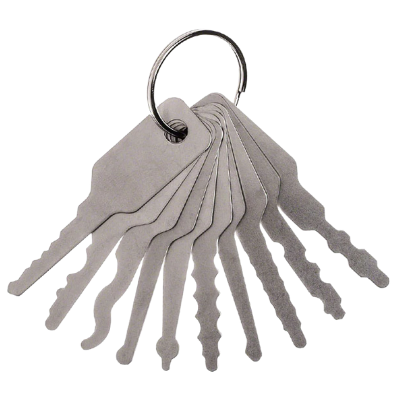
These small, generally wave-shaped picks are designed to be jiggled in the keyway of a lock to open it. To use them all, you must place them in the keyway and move them up and down while turning the core.
They can be used on many different types of locks with a decent level of success. For example, they are commonly used for wafer locks, the kind you will find in cars, lower security pin tumbler locks in padlocks, and more.
The following picks are similar to key jigglers but even simpler to use.
*Paid Links
Comb Picks
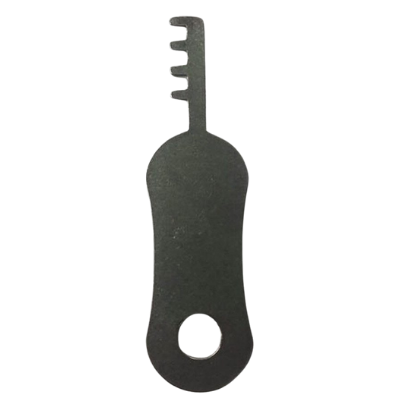
Used for locks with a specific flaw found in some cheap padlocks and other lock cores where the length of the bible above the lock core is too long. This allows the pins to be pushed up entirely into the bible and out of the lock core, simply allowing the lock to be turned without a key.
This is an inexcusable design flaw in a lock, but it still exists in locks today. Most notable in the Mater Lock 140, 141, and 142 series padlocks. The LockPickingLawyer shows how severe this security issue is with these locks in this video.
*Paid Links
Lever Picks
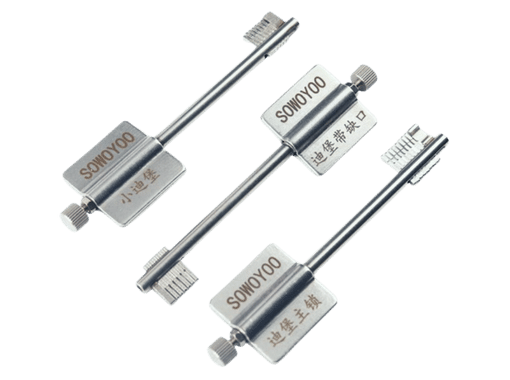
Lock picks for lever-style locks are inserted and rotated inside the lock to open it. Another type of lock pick that you would only be looking for if you are interested in picking these types of locks as they are not that common these days.
*Paid Links
Skeleton Keys
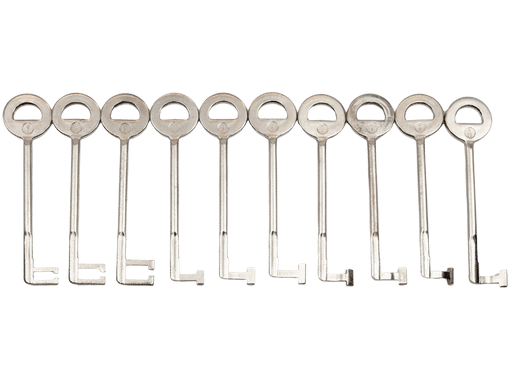
A specific type of key is used to open the lever lock; they do this by only having the most basic tip on the end of the key possible to bypass the warding in a warded lock; you can learn more here.
*Paid Links
Disc Detainer Pick
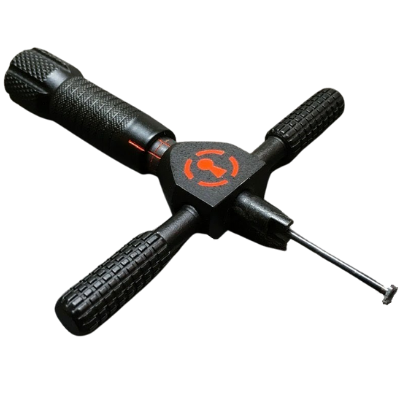
The disc-detainer pick is a more specific type of lock pick used for a reasonably standard lock. Made famous by the LockPickingLawyer with his line “the pick that BosnianBill and I made,” he has become an icon in the lockpicking community.
A disc detainer pick has an external handle with pins on the end for holding this first disc of a disc detainer core in place. Then there is the inner pin with a flat head on the end of it used to turn the discs in the core of the lock one at a time. This pick has different variations with longer forces on the front or other shapes of the turning head that goes inside the lock.
That now famous line, “the pick that BosnianBill and I made,” led to the disc detainer pick that Sparrows now sells. The plans for it were donated to the company by the LockPickingLawyer and BosnianBill in exchange that they would produce it at a reasonable cost for the community.
This type of pick works by rotating the discs in the lock one at a time, allowing the lock to be picked. This is similar in some ways to traditional pin picking but also different in several respects.
*Paid Links
Dimple Lock Picks
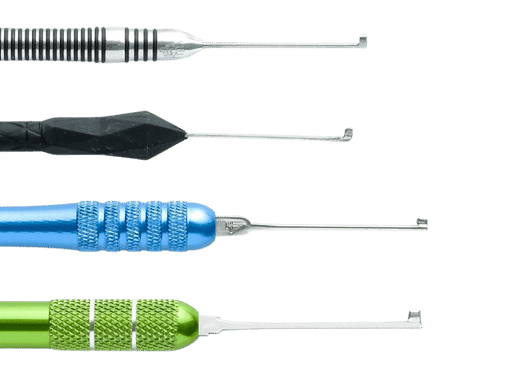
Dimple picks are long thin picks that usually have a flag on the end of each one, and unlike standard picks where you lever them into place, a dimple pick is turned to push the pins. This is why the handles of the picks are usually round with grippy rubber on the handles.
They are less common types of locks, but they are still used in many situations, from door locks for homes to car doors and even bike locks; they are used sporadically, usually in higher security products.
*Paid Links
Tubular Lock Picks
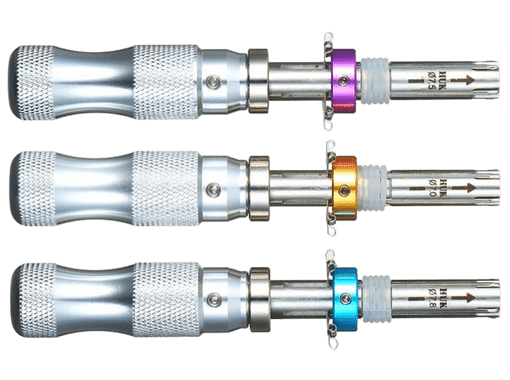
Tubular lock picks are pretty basic and arguably one of the easiest types of lock picks it uses. They don’t require any skill, simply the right size and technique to use them. There are versions of tubular picks from different manufacturers, but the basic ones you can buy from china do the job perfectly well.
Unfortunately, tubular locks are seen to be high-security by many people that don’t know the difference. Unfortunately, this couldn’t be further from the truth.
*Paid Links
Lock Picking Vise
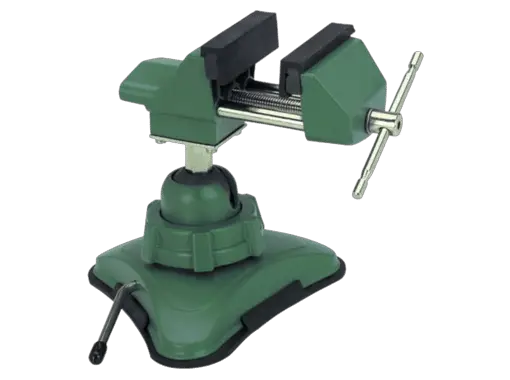
While not an essential piece of lockpicking equipment, a vise is a convenient item that most beginners will be looking for not long after they start.
Padlocks are usually not too hard to hold onto, but many lock cores can be difficult to hold onto, and especially if they are a bit of a challenge, you will find that it won’t take long for your hands to get tired.
A vise also allows you to open a lock in a way that is more consistent with how it would be in the real world. For example, as many locks are mounted in a door, you will not be holding them in your hand, and having the lock core in a vise is much closer to this.
*Paid Links
Practice Locks
When you begin lock picking, practice locks are one thing that you will be looking to get your hands on; whether they are from eBay, your local locksmith, or a set of new locks, you will need to get your hands on a bunch of locks that you can try opening.
The more locks you have and the more different types you have, the better, as they will give you more experience with different types, difficulties, sizes, and more. That being said, having a bunch of the same lock can be useful to learn different bitting in the same type of lock.
Clear Practice Locks
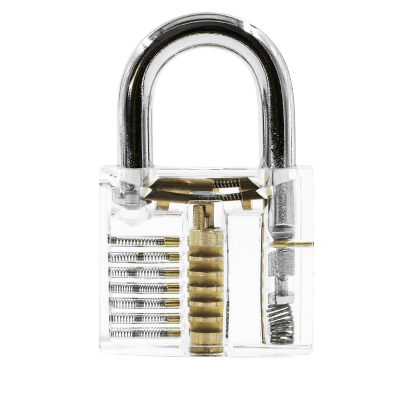
Practicing on a clear lock is indispensable, but you will want to move on from them quickly. They provide new pickers with a much-needed understanding of what they are doing inside the lock while picking. This is very valuable knowledge for when a picker moves onto real locks.
That being said, because they are made of acrylic, the feel of the pins inside the lock is not the same as a metal lock. They also wear white quickly as acrylic doesn’t.
*Paid Links
Cutaway Locks
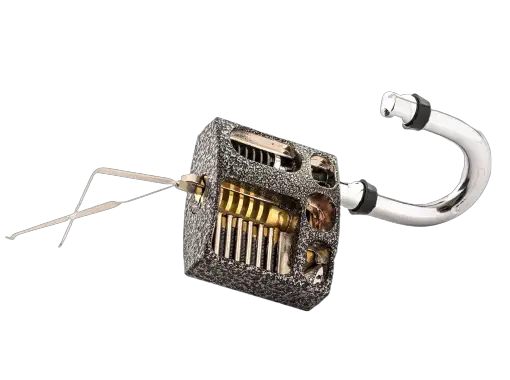
Cut-away locks are much better training aids than clear locks because they feel like the real thing. The only problem with them is that they are much more expensive than clear locks as they are much harder to make.
One of the benefits of cutaway locks is that you can also change the pins to make the lock feel different and learn how to pick other types of locks.
*Paid Links
Used Locks
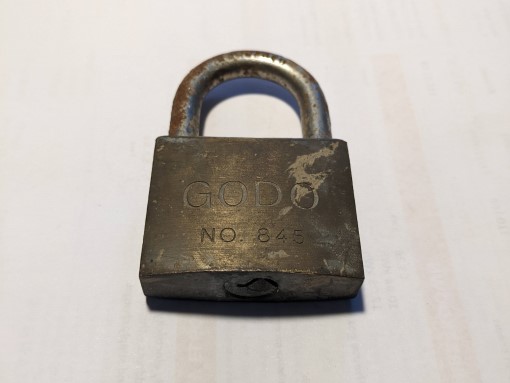
When looking for practice locks, it can be great to ask around locksmiths and keep an eye out on eBay for old locks with lost keys or just ones that are not in use anymore that you can start picking.
Don’t be afraid to ask around; even family and friends may have some that they can give you and the worst they can say is no.
The only drawback of using old locks like this is that you are not assured that they even work, and they can have other issues, too, like being seized up or broken entirely.
*Paid Links
Sets of Locks
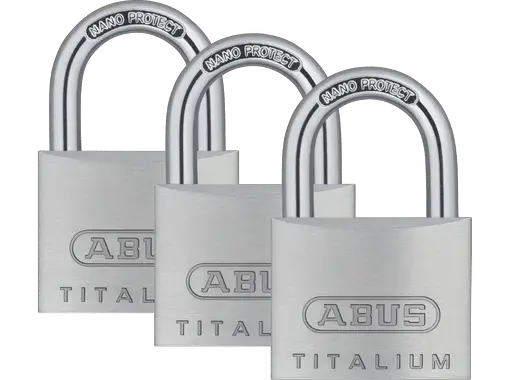
You can buy many sets of locks online, which can be an excellent option for learning to pick locks consistently. Unlike used locks, you know they will work and have keys.
A set of practice locks will also give you invaluable experience picking a lock without knowing the bitting inside the lock. This is very useful for opening new locks quickly because you need to do it without any knowledge of the biting or biding order of the lock.
*Paid Links
Lock Disassembly Tools
As you progress in your lock-picking adventure, you will want to start pulling apart some locks. When you do, you will need some specific tools that will allow you to do so.
Lock Disassembly Kit
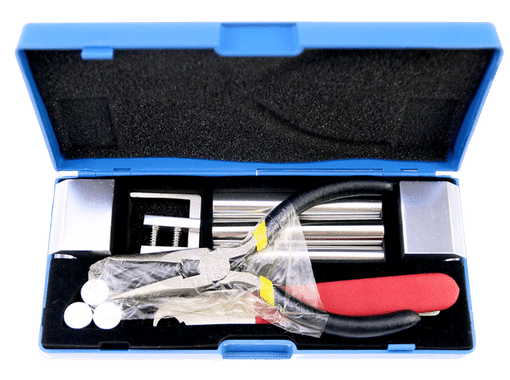
First and probably the best is a lock disassembly kit. These include all the tools needed to open up most locks. The basics like followers, pliers, and followers to allow you to get your locks. Great as a starter rather than buying a whole bunch of individual tools.
*Paid Links
Plug Followers
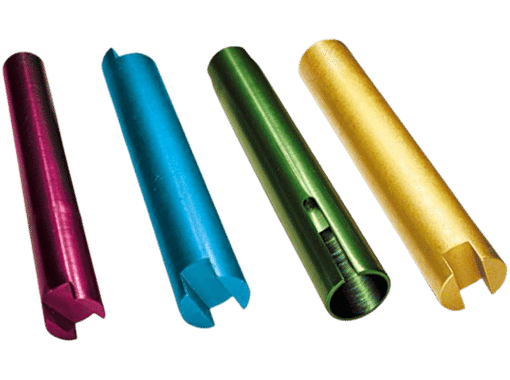
Simply pieces of tube or bar, plug followers are an important piece of kit that you will need for disassembling and reassembling lock cores. They simply hold the driver pins and springs in the bible of the lock so you can remove the core.
While anything the right size will work, the most common followers are aluminum tubes, you can get a set of followers in various sizes to work with most locks you will come across easily.
*Paid Links
Circlip Remover
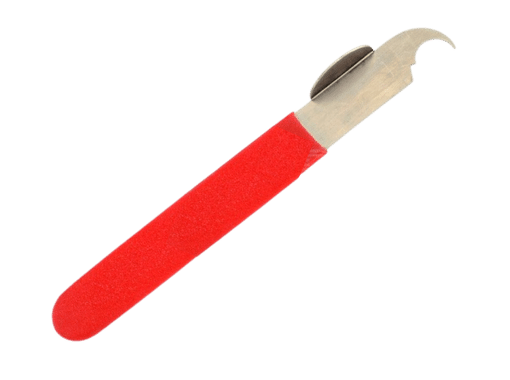
You will find a specialized tool for removing circlips inside many locks; these tools are invaluable as the removal and refitting of circlips can be a real pain without them.
Usually, you will end up stabbing yourself, trying to remove them with a pair of pliers or a screwdriver, so these can be an excellent investment if you like your hands.
Pinning Trays

If you want to look like a real pro, you will need a pinning tray. While they are not essential, they are convenient for keeping everything in the right place and lined up, so you don’t lose your parts.
They come in aluminum, wood, or plastic, and if you don’t want to buy one, you can always 3D print one for yourself. Here is a design for a good one.
*Paid Links
Shims
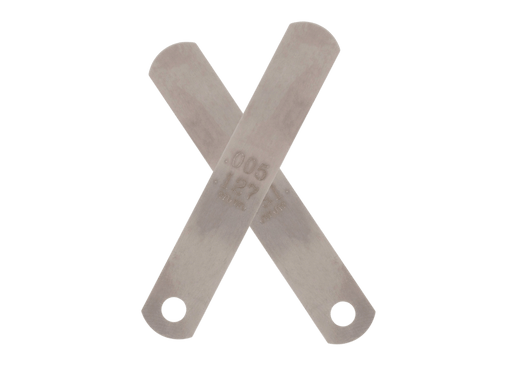
The humble shim is simply a very thin piece of metal, mainly used when disassembling locks. Keeping driver and key pins in place is one use, but they can also be used to open padlocks and for many other purposes.
Lock Noob recommends that everyone has a hand full of shims hanging around as they are useful for many things.
*Paid Links
Lock Bypass and Destructive Tools
Bypass tools are a set of tools that can be used to open locks in specific ways due to flaws in the design of the lock. An example is a lever accessible inside the lock that will open it when accessed through a small hole. Unfortunately, these types of vulnerabilities are common in many locks and are challenging to avoid.
Destructive tools are precisely what they sound like. Most thieves access locks via these tools, as they are effective against all kinds of locks simply because of the difficulty and time that varies depending on the lock. Some locks are impractical to destructively open as it will take a long time to do so.
Note: Sometimes locksmiths will use destructive methods to open locks as some locks don’t have any other easy ways of being opened.
Neodymium Magnet
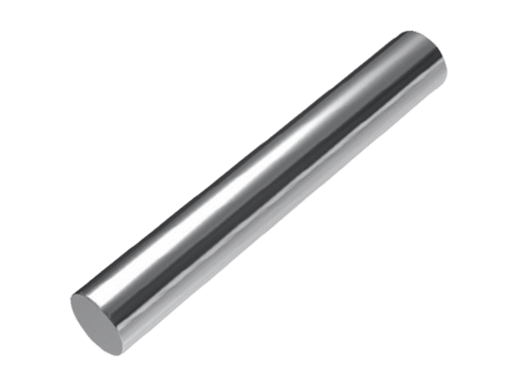
Sometimes, a strong magnet will be enough to open a lock; it’s not that often, but from time to time, locks are not shielded or designed to protect them from a magnet.
A strong magnet is also very handy for time times you drop something or lose something into a gap where you cant grab it. For example, it can be convenient to have a strong magnet around when you drop a lock spring on the carpet, and instead of spending the next 30 minutes on the floor, you pick it up in seconds with a strong magnet.
*Paid Links
Padlock Shims
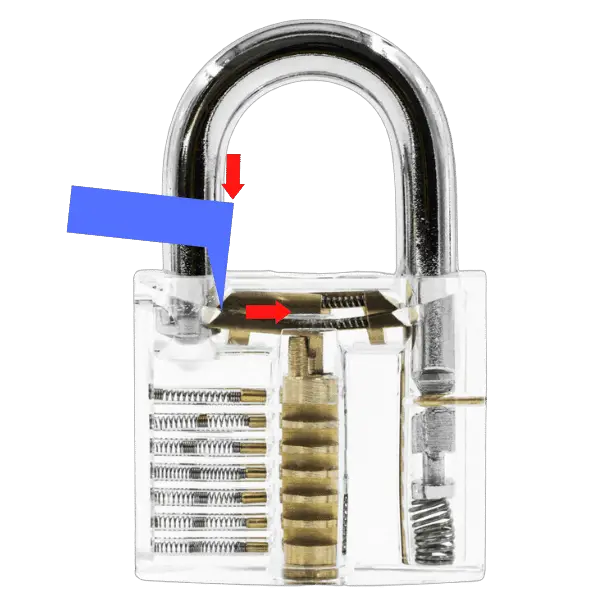
Thicker and more robust than the shims above, they are shaped and designed to open padlocks that use spring-loaded pals as their locking mechanism.
You can even make some of these yourself if you like; we have the guide on making them and a link to where you can buy some in our article here.
*Paid Links
Ramset Gun
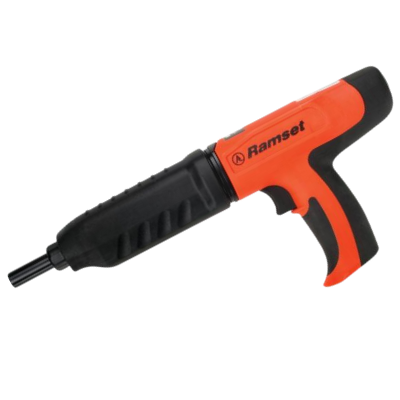
Not a traditional tool for getting into locks, a Ramset gun is a construction tool that fires a piston with blank .27 caliber shells to drive large nails directly into concrete.
But if you remove the nails and allow the piston to strike the top of a lock directly, it can prove destructive enough to open weaker locks in one or two strikes.
*Paid Links
Slide Hammer
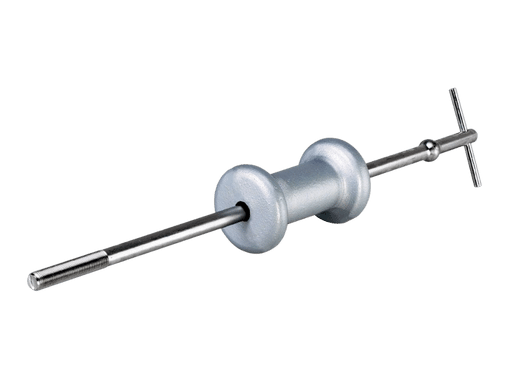
A tool initially used in the automotive industry to remove parts stuck inside something. For example, a slide hammer consists of a weight that slides over a central rod; this rod can then be attached to objects you need to pull, and you simply slide the weight away from the item being pulled.
Slide hammers are very effective and can also be quite destructive when used on locks.
*Paid Links
Hinge Pin Tool
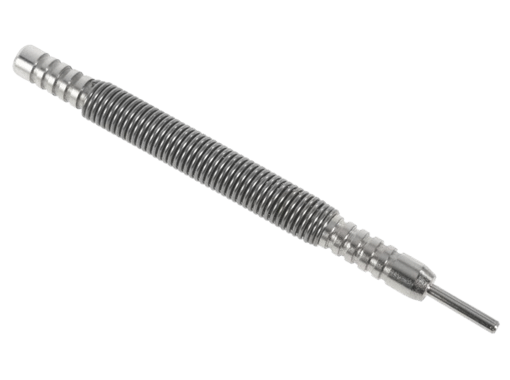
More of a tool for entry professionals, but it can still be useful; these are simply two punches attached to each other with a spring. While they are meant for removing the springs from doors, they are useful for many other purposes.
They are a handy tool, from pushing pins out of locks to marking points in metal. Much smaller than having a hammer and a set of punches. So if you are trying to keep your kit as small as possible, these could be a great option.
*Paid Links
Other Tools and Useful Materials
Wiper Blade Inserts
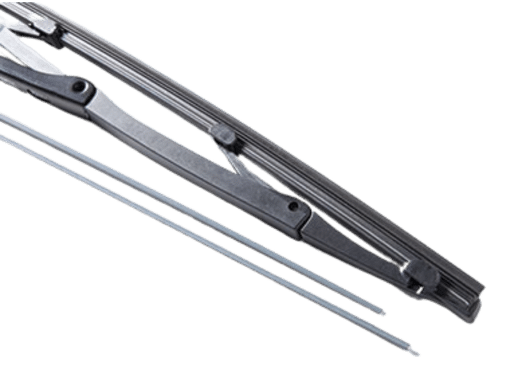
Get a bunch of these for making tools. They are typically made of strong stainless steel, so they are great for bending into different shapes to use as turning tools.
Files and Sandpaper
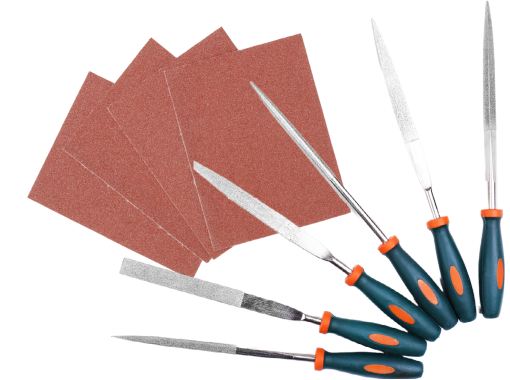
You will need some abrasive tools to fix new tools or create some of your own: A few pieces of sandpaper with different grit levels and a few other files of different grades and shapes, some flat, some round, for different situations.
These may not seem that useful now, but they will be more useful the more picking you do, especially if you get into a bit more DIY.
*Paid Links
Questions About Lock Picking Tools
There are a lot of questions people ask about lockpicking, so we have tried to answer a bunch of them here for you.
What Is The Most Common Lock Pick?
A standard hook is the most common type of lock pick. But turning tools, also known as tension wrenches, are the most commonly used lock picking tool.
These tools are used together to push the pins up inside a lock, while the turning tool is used to apply a turning force to the core of the lock the same way a key would.
Are Lock Pick Sets Illegal?
The simple answer to this question is no, but the laws are different all around the US and around the world. So to be sure you should look at the laws in your local area.
So you will need to check in your local area to ensure you are in the right place. You can find more information about that in our post about the legality of lock picks here.
What is The Best Tool to Pick a Lock?
The best tool is the one that you have with you. That can be a wire, a bobby pin, or something else. If you want to buy some tools to pick locks, then the best thing you can get is a set of lock picks.
Is Lock Picking a Good Skill?
Lock picking can be a useful skill in the right situation, but in general, it is a hobby more than a useful skill.
There are specific situations where it could be helpful or even required, but it is not very common.
Some locksmiths don’t even know how to pick locks with traditional lock picking tools, and even if they do, likely, they are not very good at it.
Final Thoughts
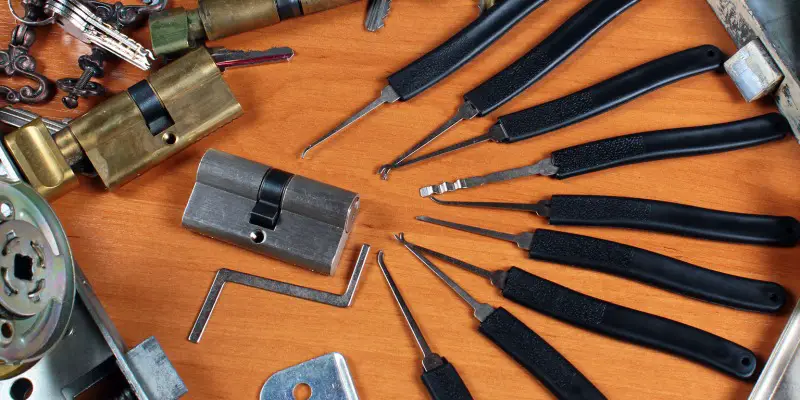
There are many tools, some better than others, some high-quality, some low-quality. Most people start with a basic lock pick set and go from there. But, like many hobbies, you will be more interested in particular areas of locksport over others.
Don’t worry about getting too many tools; just start picking locks and enjoying yourself. Then you can always buy more or better tools later as you improve, you can even try your hand at making some of your own.
Making tools is a requirement for earning some lock picker belt rankings on Reddit so if that’s what you want to do then you will have to make some tools anyway.
If you are interested in seeing what tools the LockPickingLawyer uses, you can find them here.


